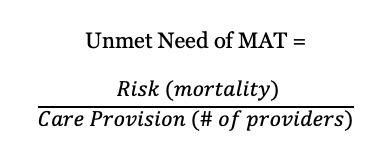ASU global health PhD graduate creates new tool to help treat opioid use disorder

Alexandria Drake is graduating with her PhD in global health this spring from the ASU School of Human Evolution and Social Change. Photo courtesy Alexandria Drake
Roughly 188 individuals in the United States die every day due to an opioid-related overdose, according to Arizona State University PhD student Alexandria Drake, who reported on the issue in her dissertation.
Her research led to the development of a dashboard that communities, health-care providers and policymakers can use as a tool to help combat the opioid problem in America.
“One of the things about working in public health is that resources are limited,” said Drake, who is graduating with her PhD in global health from the School of Human Evolution and Social Change this spring. “As much as we would like to say we’re going to address opioid dependency and a lack of treatment throughout the United States, there’s just not enough resources, whether it’s financial, personnel or time. How can we figure out a way to prioritize areas that really need attention right now? How do we highlight those alert areas?”
Drake's dashboard provides flexible data about opioid use disorder, or OUD, and treatment, at a county level, that is easy to access.
The U.S. Department of Health and Human Services and the National Institutes of Health indicate the gold standard of treatment for OUD is called medication-assisted treatment, or MAT, explained Drake. This treatment combines medication and cognitive and behavioral therapies.
“Despite the proven efficacy of MAT, current estimates show that roughly 30 to 40% of all counties in the United States do not have any providers licensed to prescribe one of the most common MAT medications, buprenorphine, and that percentage increases to roughly 54% when looking specifically at rural counties,” Drake said.
The dashboard she created provides the tools for “identifying the unmet need for MAT in the United States.” She accomplished this by developing an unmet need of MAT metric, which is a ratio of risk (opioid mortality) to care provision (number of providers standardized by population) for each county in the U.S.

"We saw a big pocket of unmet need of MAT along the Gulf Coast — southern Louisiana, southern Alabama and a little into the panhandle of Florida," Drake said. "We saw some high unmet need of treatment around parts of the Four Corners states and counties surrounding Lake Michigan."
Stigma and treatment hurdles
If MAT is effective, why are there some counties with no one to prescribe buprenorphine?
“I think there are a lot of stigmas,” Drake said. “One of the stigmas you hear about more frequently is this rhetoric that if you’re involved in this type of work, you hear all the time that medication-assisted treatment is swapping one dependency out for another. Which is not accurate. The use of medication-assisted treatment is the same as medication you would take for any other ailment you were treating.”
Another stigma is that drug dependency is seen as some kind of moral failure, Drake said.
A major part of her PhD research focused on the DATA 2000 waiver or “X-waiver.” Essentially this meant that in order for a medical doctor to prescribe Buprenorphine, they needed to go to an additional eight-hour training and obtain extra certification. This could be another treatment hurdle.
However, in January 2023, the federal government removed this requirement. Drake said this was a huge step in the right direction, and it's an example of how fast-changing the opioid epidemic and policies are.
Drake made it clear that she wants this dashboard to be used in a way that makes it easier for communities to get the help they need. She said the problem doesn’t just lie with not enough providers helping, but it could also be insurance hurdles.
“This is a tool to help communities identify what may be driving the opioid epidemic in their community,” she said.
“Is it more that it has to do with this unmet need of treatment? Is it the case that there are just not enough providers and not enough care provision? Is it insurance barriers? Or is there is a high quantity of fentanyl being brought in through interstates? These are issues that all need to be explored,” Drake said.
Next steps
Alexandria Drake presenting her research at a conference in Portland, Oregon. Photo courtesy Alexandria Drake
Drake’s next goal for her dashboard and research is outreach. She wants to continue to gather feedback and make the dashboard more user-friendly. Eventually, she hopes to include other types of substance use data.
Drake has accepted a position as an assistant professor in the Master of Public Health program at the University of Puget Sound in Tacoma, Washington, where she will be able to continue her research and teach.
"I think there is more that can be done to better integrate communities and those outside of academia into public health work. I feel strongly about having community stakeholder voices involved in the research process, especially when it comes to developing tools to help the community and public health practitioners."
Drake was also a graduate research assistant at the Knowledge Exchange for Resilience at ASU, focusing on qualitative research methods where she collected data on utility bill burden.
More Health and medicine

ASU honors students work on HPV research as part of Barrett College's largest-ever group thesis
Not every undergraduate student comes across the opportunity to do research as part of a team. Even fewer have had the chance to…

College of Health Solutions alumnus named Military Medic of the Year
By Keri Hensley and Kimberly LinnJonathan Lu has looked out for the health of his fellow military service members his whole…

ASU, Mayo Clinic forge new health innovation program
Arizona State University is on a mission to drive innovations that will help people lead healthier lives and empower health care…
